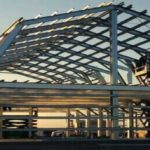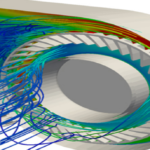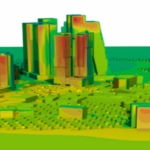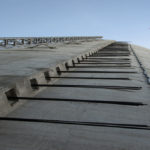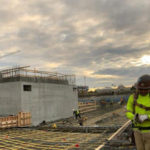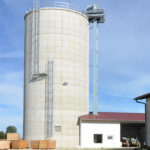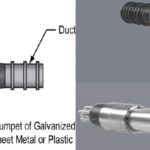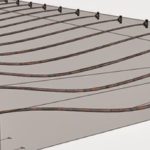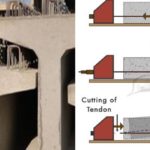Blog
Components Of Post Tensining

Nowadays, in bridges with long spans and reinforced concrete structural elements, post-tensioning application provides more bearing capacity in thinner sections, saving material and creating more aesthetic designs. Therefore, the strength, durability, quality, and properties of the materials used in post-tensioning are important.
Let’s get to know the elements of post-tensioning, which is used to strengthen structural elements by post-tensioning and increase their structural strength:
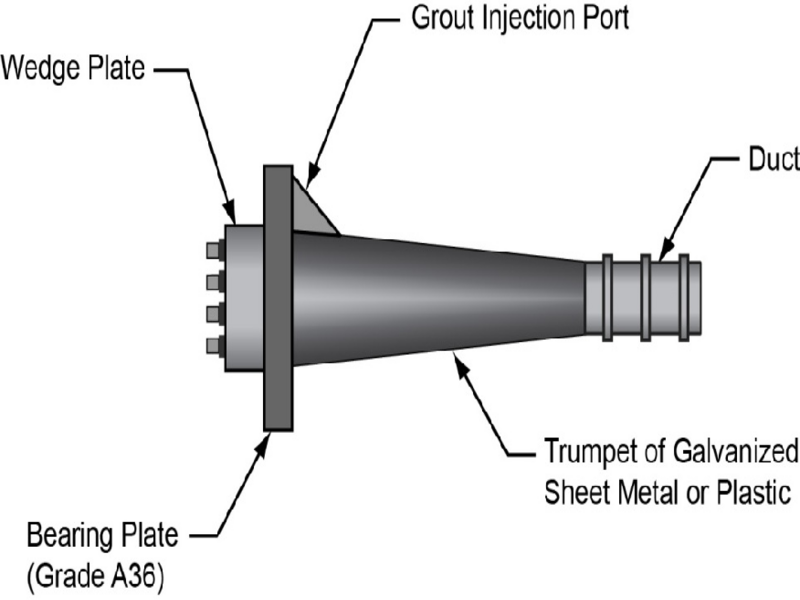
Galvanized Duct
Due to the flat shape of the duct, the system makes maximum use of the height of the slab structures and thus increases the effect of the added prestressing.
In the post-tensioning method, metal or plastic conduits are used to accommodate the prestressing cable. In some countries the use of plastic conduits is common.
Galvanized ducts are used to create a continuous gap through the concrete for the subsequent placement of the post-tensioning tendon steel. The quality, integrity and continuity of the conduit is important as a barrier to prevent corrosion of the conduit in case of contingencies.
Strand
Strand are thin steel wire ropes used in post-tensioning systems to provide prestress. These steel wires are stretched to the desired tension levels to increase the load carrying capacity and tensile strength of the reinforced concrete element.
Protection Cab
In bonded post-tensioning systems, a corrosion-resistant coating can be applied to protect the steel wires and members. Protection cab play an important role in ensuring the longevity of structural elements, reducing maintenance costs, and adding durability to the structure.
Grease Covers
It is used in anchors to protect against corrosion and to ensure smooth movement of the wedges that prevent the wires from slipping.
Trumpet
The trumpet remains inside the concrete element and transmits the tensile force towards the concrete during tension. It has different sizes depending on the number of wires to be stretched. It is provided with pre-injection hole and threaded holes for connection with the mold.
Bearing Plate
The bearing plate used during post-tensioning is a component used at the point where the steel wires are applied to the reinforced concrete element in the duct or at the anchorage points.
Wedge
Wedges are very important components that grip the wires and prevent them from slipping after being stretched. They are inserted into the anchors to lock the wires in place.
Anchors
Anchors are used to secure the ends of high strength steel ropes of post-tensioning within the structure. Anchors are used to reinforce structural elements and increase their durability. Properly designed and applied anchors ensure the longevity of structural elements and give the structure extra bearing capacity. There are fixed and stressing anchors for ropes. In post-tensioning application, one end of the ropes is connected to the fixed anchor while the other end is connected to the stressing anchor. In fact, the tensioning process is applied at the end where the stressing anchor is located.
Anchor Head
The anchor head is an important part of the tensioning system. It works in conjunction with the wedge that holds the individual tension member. The prestressing load is then transferred to the Bearing Plate. For tendon sizes, this prestressing force can be transferred directly to the structure without the need for a Bearing Plate.
Anchor Lock
It is produced to prevent the prestressing cable from escaping back after the rope cutting process.
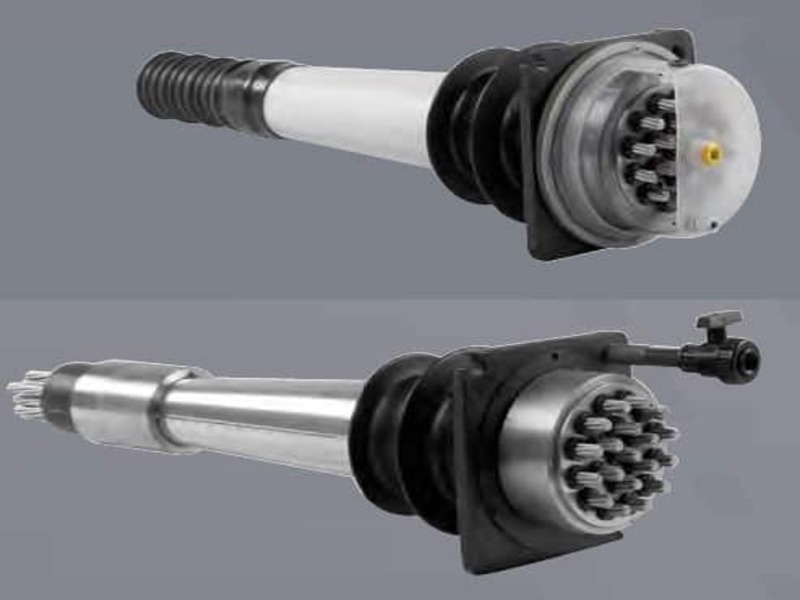
Grouting Cap
The objectives of grouting a post-tensioning tendon are:
– To provide effective corrosion protection by completely filling the tendon channel with alkaline material
– To provide bonding of the prestressing steel with the structure
Wedge
The location of the wedge is very important in post-stretching to anchor the strands of the tendon.
It is in the form of two or three pieces with a spring-loaded wire retaining clip or o-ring in a groove around the thick end. The wedges are hardened by insertion into the wire and a ductile core between the wire and the wedge hole.
Jack
These hydraulic or mechanical devices are used to apply tension to steel wires. It allows the necessary force to be applied to stretch the wires in the tendon to the desired level.
Backfill Material
After the tensioning process is completed, the tension channels are usually filled with a suitable filling material. This fills the gaps around the wires and channels, providing protection and durability.
Latest Blog
-
Methods Used In Earthquake Performance Analysis
4 July 2024 -
Reinforced Concrete Calculation Static Report
31 January 2024 -
Steel Calculation Static Report
31 January 2024 -
What Is CFD Analysis?
22 December 2023 -
What Are The Benefits Of CFD Analysis?
22 December 2023 -
Silo Reinforcement with Post-Tensioning Method
26 September 2023 -
Post Tensioning Method in Cantilever Slabs
4 September 2023 -
Post-Tensioning Application In Reinforced Concrete Silos
22 August 2023 -
Components Of Post Tensining
16 August 2023 -
What Are Pre-Stressing And Post-Tensioning?
11 August 2023 -
What is Prestressing?
8 August 2023 -
History Of Post Tensioning
8 July 2023 -
Post Tensioning Method In Foundations
14 June 2023





